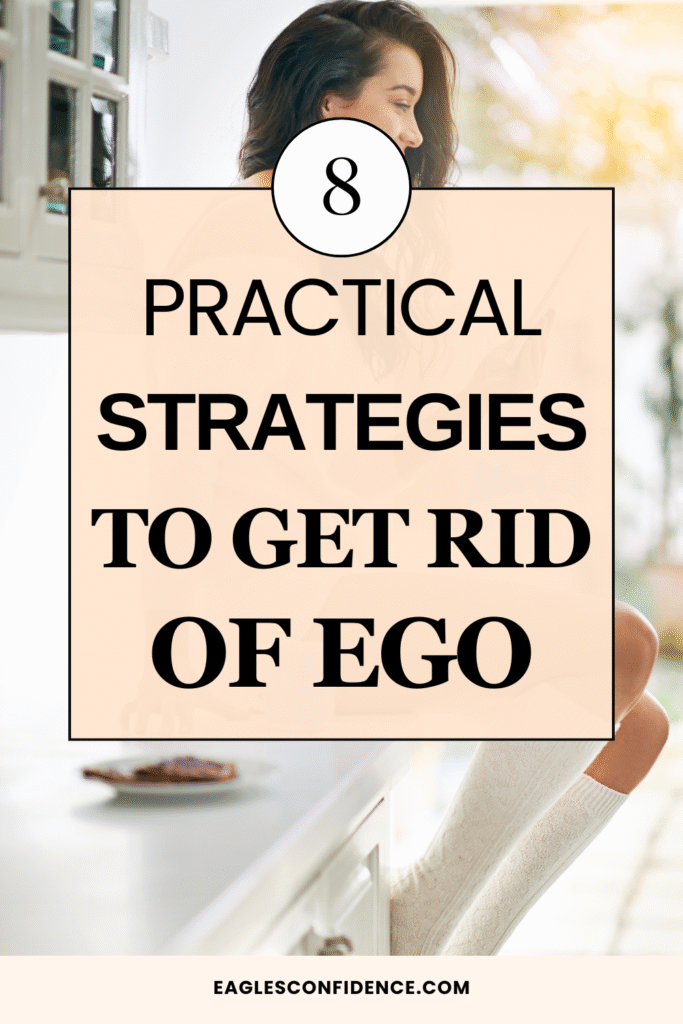Ego refers to an individual’s sense of self or the part of the mind that is responsible for a person’s identity and experiences. In psychology, the ego is often viewed as an essential component of personality, serving as a mediator between the id, which embodies primal desires, and the superego, which represents moral constraints. This interaction is crucial in shaping a person’s thoughts, actions, and overall self-perception.
Ego manifests in various ways, influencing how individuals perceive themselves and interact with others. When functioning optimally, a healthy sense of self allows one to navigate social situations with confidence and self-assurance. However, when the ego becomes inflated—often termed as having a “big ego”—it can lead to detrimental behaviors. Such an inflated self-concept can foster arrogance, defensiveness, and a disregard for others’ perspectives, culminating in conflicts and misunderstandings within interpersonal relationships.
A pivotal factor distinguishing healthy self-esteem from a problematic ego is the capacity for self-awareness and humility. Those who possess a balanced ego understand their strengths and weaknesses, enabling them to engage constructively with others and to accept feedback without feeling threatened. Conversely, an over-inflated ego often manifests as a need for validation and dominance, which can create significant obstacles in personal and professional interactions.
How To Get Rid Of Ego
1. Practice Mindfulness and Self-awareness
Practicing mindfulness and self-awareness is fundamental in the journey of understanding how to get rid of ego. Mindfulness refers to the state of being present and fully engaged at the moment, while self-awareness allows individuals to recognize their thoughts and emotions as they occur. By cultivating these qualities, one can begin to mitigate the influence of ego in their daily life.
Mindfulness meditation, reflective journaling, and present-moment awareness are key techniques for diminishing the ego’s influence. Meditation cultivates non-judgmental observation of thoughts, journaling reveals subconscious patterns, and presence allows for challenging negative ego-driven thoughts. These practices foster humility and openness, leading to a more balanced, less ego-dominated life.
2. Embrace Humility
Humility acts as a vital antidote to the often overwhelming presence of ego in our lives. By embracing humility, individuals learn to acknowledge their limitations and recognize the contributions of others, which can significantly diminish the influence of ego. One of the foundational steps in cultivating humility involves understanding and accepting that everyone has strengths and weaknesses. This recognition helps to foster a more balanced self-view, allowing one to let go of the need for constant superiority.
Expressing gratitude is yet another method to cultivate a humble mindset. By regularly acknowledging and appreciating the efforts of others, individuals shift their focus away from self-centered thoughts and ego-driven desires. This practice not only strengthens interpersonal relationships but also fosters a sense of community and belonging. In turn, this can lead to lasting connections based on mutual respect and appreciation, further diminishing the ego’s hold.
In a world often dominated by a competitive spirit, taking steps to embrace humility can provide immense personal benefits. As relationships grow deeper and self-views become more accurate, individuals will find it increasingly possible to understand how to get rid of ego effectively. By cultivating humility, one creates the groundwork for more enriching and authentic interactions with others.

3. Focus on the Collective, Not the Individual
Shifting the focus from individual achievements to collective goals is a powerful strategy in learning how to get rid of ego. When individuals prioritize personal accolades, they may become overly concerned with their status and recognition, which fosters a thriving ego. By contrast, embracing a collective mindset can help diminish these self-centered tendencies, creating an environment conducive to collaboration and shared achievement.
Team-oriented activities, including sports, collaborative projects, and team-building exercises, effectively diminish ego by emphasizing collective contributions over individual prowess. These activities promote camaraderie, shared objectives, and mutual respect, demonstrating that ego thrives in isolation while collaboration fosters belonging. By celebrating shared success and aligning personal aspirations with group goals, individuals develop empathy and weaken ego-driven behavior, leading to enhanced group synergy and personal growth.
Related: 8 Best Ways To Be Selfless
4. Replace Harmful Thought Patterns
To effectively understand how to get rid of ego, one must first recognize the negative thoughts and beliefs that often fuel it. These cognitive distortions can inflate self-importance and create unrealistic perceptions of oneself, leading to a distorted self-image. Identifying these harmful thoughts is the first step toward dismantling the ego.
Once negative thoughts are identified, the next step is to challenge them. This can be achieved through a process known as cognitive restructuring, which involves questioning the validity of these thoughts. Ask yourself, “Is there evidence to support this thought?” or “Am I exaggerating this situation?” Such inquiries can prompt more balanced thinking and foster a healthier self-view.
In addition to reframing pessimistic beliefs, utilizing positive affirmations can also be beneficial. These are constructive statements about oneself that counter negative self-talk. Regularly practicing affirmations can help reshape one’s mental narrative, thereby assisting in reducing the robustness of the ego.
Self-criticism should also be approached constructively, allowing for growth without undermining one’s self-esteem. By embracing personal flaws and mistakes as part of the learning journey, individuals can mitigate the ego’s influence, resulting in an enhanced authentic self-image.
5. Practice Listening and Empathy
To reduce ego, practice active listening and empathy. Active listening means truly engaging with the speaker, using techniques like eye contact to show respect and understanding. Suspend personal judgments to fully grasp others’ perspectives and emotions. This fosters genuine relationships and lessens the need for validation. By prioritizing understanding over reaction, and valuing others’ experiences, you weaken ego’s hold and enhance social and emotional intelligence.
6. Engage in Service to Others
Volunteering and serving others effectively reduces ego and fosters humility. By focusing on community needs, individuals shift from self-centeredness to a more fulfilling life. Contributing through shelters, food banks, tutoring, or community initiatives creates purpose and connection, diminishing self-importance. Personal stories highlight the transformative impact of service, showing how helping others can replace the pursuit of personal accolades with deeper satisfaction. Serving others also provides new perspectives and emphasizes our shared humanity, leading to a reduction in feelings of superiority and facilitating self-discovery.

7. Learn from Criticism and Failure
Embracing criticism and learning from failure can significantly reduce one’s ego, allowing for personal growth and improved interpersonal relationships. Often, criticism is perceived defensively, as an attack rather than an opportunity for growth. To effectively mitigate the effects of ego, it is imperative to reframe criticism as constructive feedback. This shift in perception can be achieved by analyzing the feedback objectively, identifying specific areas for improvement, and recognizing that everyone has room for development.
To manage criticism and failure, practice active listening to understand others’ perspectives, fostering respect and self-improvement. View failure as a learning opportunity, analyzing mistakes to build resilience. Reflective journaling can document these experiences, promoting a grounded perspective and reinforcing that criticism and failure are essential for personal growth, thereby reducing ego-driven responses.
Related: 10 Importance of Positive Affirmations You Need To Know
8. Cultivate a Growth Mindset
Developing a growth mindset is a crucial component in learning how to get rid of ego. This psychological framework, coined by psychologist Carol Dweck, distinguishes between two types of mindsets: fixed and growth. Individuals with a fixed mindset believe that their abilities and intelligence are static, thereby often feeling threatened by challenges and viewing failure as a reflection of their identity. Conversely, those with a growth mindset understand that their capabilities can be developed through effort and perseverance. This perspective fosters resilience and adaptability, significantly reducing the hold of ego in one’s life.
Cultivating a growth mindset involves embracing challenges as learning opportunities and seeking constructive feedback to improve. Self-reflection helps identify ego-driven behaviors, which should be replaced with growth-oriented affirmations. Prioritizing learning over status fosters humility and collaboration, diminishing ego and leading to more rewarding personal and professional growth.
Save the pin for later
